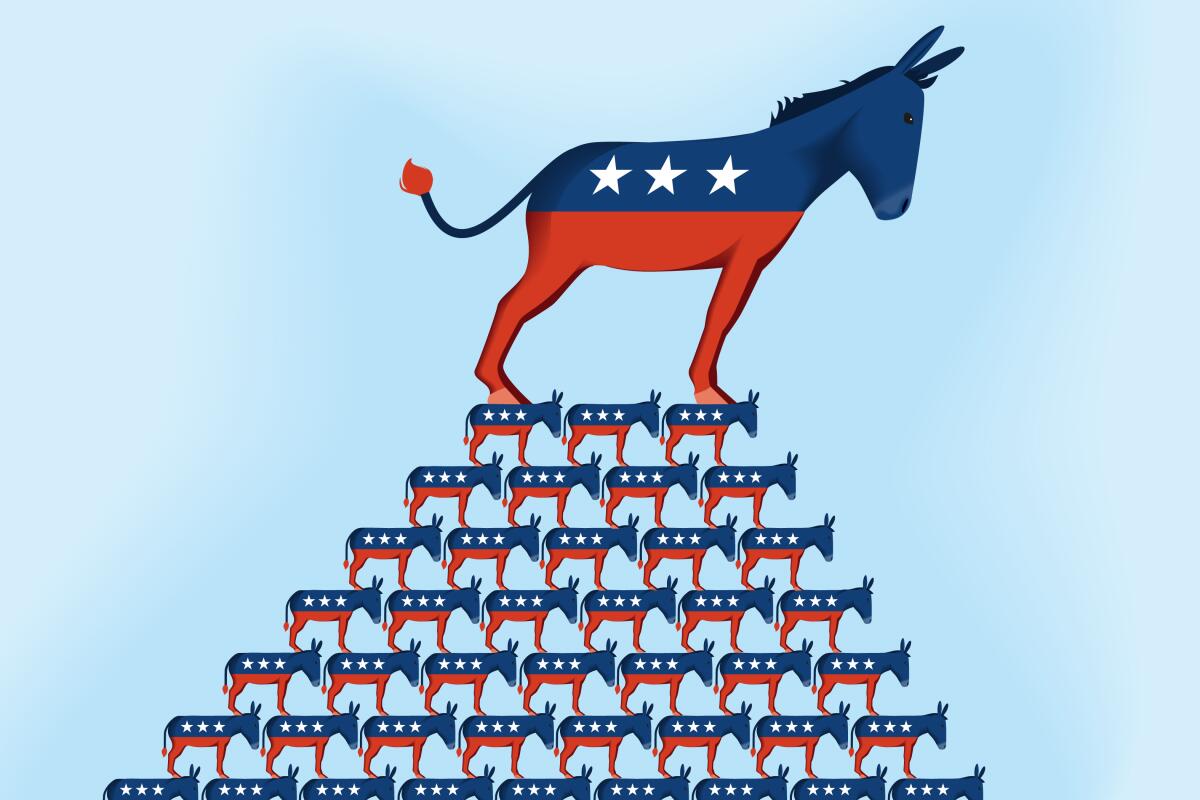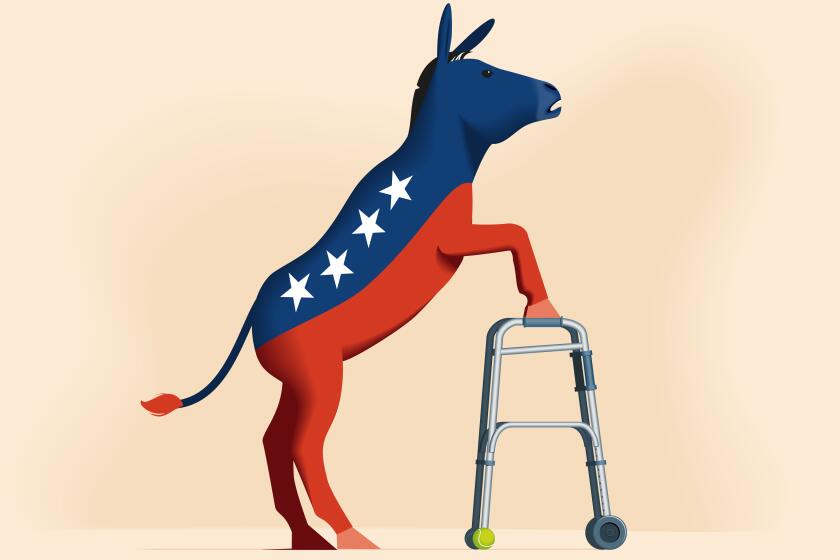Moderate and progressive Democrats have to unite to win back the White House in 2020

The battle for the soul of the Democratic Party is underway.
What’s it to be — progressive or moderate? Passionate or pragmatic? Left or less left? Will voters embrace the party’s more radical wing and back far-reaching policies such as “Medicare for all” and free college tuition, or will they support a more cautious, more centrist presidential candidate who might appeal to independent voters and disaffected Republicans in the general election?
It’s a healthy if fraught debate. By all means Democrats should discuss the Green New Deal, the proposals to dramatically increase taxes on the wealthy and the reemergence of the dreaded word “socialism.” They should debate whether bipartisanship is an anachronism, whether compromise with Republicans is a form of cowardice and whether government can be fixed by tinkering around the edges or requires a radical overhaul.
We’re not choosing a candidate at this extremely early point in the primary process. But as the race unfolds, here are two things to keep in mind. First, the Democrats need a strategy for winning in November 2020. If the party is not going to play to the swing voters and centrists it could conceivably win over with a more moderate presidential candidate, then it needs another plan to excite and activate voters in the battleground states. Maybe Sens. Bernie Sanders (I-Vt.) or Elizabeth Warren (D-Mass.) could do that with their populist focus and their appeals to young people and the forgotten working class; or maybe they’ll alienate voters with positions too far out of the mainstream.
Second, whoever ultimately becomes the candidate will have to persuade voters that he or she can make our paralyzed democracy function again. Faced with seemingly intractable problems like climate change and growing income inequality, the U.S. will need a president with real, tangible plans, who can work effectively with others and yet who will stand firm on issues of principle. The skills of both the progressives and the moderates will be in demand. In picking your candidate, think about which of the candidates seems most likely to have that magic mix of qualities.
To a certain extent, the tension between moderates and progressives within the party is an old one. (Henry A. Wallace would have recognized it in the 1940s, as would George McGovern in 1972.) But it is also more specifically the continuation of the conversation that heated up during the 2016 primary and divided, at times quite bitterly, those excited by Sanders’ fiery progressive rhetoric and those who believed in Hillary Clinton’s cautious moderation. The rift spilled over past the primaries into the general election with disastrous consequences. Too many Clinton critics either stayed home on election day or voted for Green Party presidential candidate Jill Stein — or (gasp) backed the rich reality TV star who they perhaps imagined couldn’t possibly win.
Well, we all know how that turned out, which is why it’s so important that Democrats learn from that hard lesson. Debate all you want, hash out your priorities, pick a candidate as a party — but then stick by the group choice. Party unity is essential to winning back the White House in 2020. With an incumbent as dangerous as Donald Trump, there’s too much riding on the outcome of the election to risk a post-primary splintering of the electorate.
The Democrat who receives the nomination almost certainly won’t be able to please all the factions within the party, and many voters may have serious policy disagreements with him or her. Nevertheless, voters must not stay home and sulk on election day. Because this one thing is certain: whoever is ultimately chosen as the Democratic nominee will be an improvement over Donald Trump.
More to Read
A cure for the common opinion
Get thought-provoking perspectives with our weekly newsletter.
You may occasionally receive promotional content from the Los Angeles Times.


















